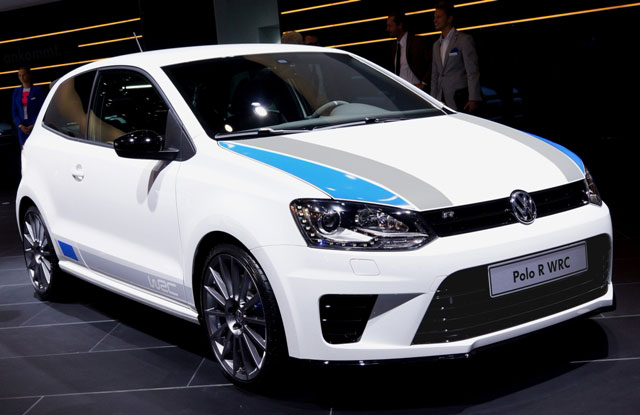One automaker is finding a new way to reduce the weight of a body panel while still giving it a familiar steel skin — using a composite plastic core between two thin steel sheets in a production termed Litecor.
Volkswagen AG has produced a hood using ThyssenKrupp AG’s Litecor for the road version of its Polo R WRC (World Rally Car). The process reduced the overall hood weight by 30 percent and cut 25 percent in CO2 emissions. It received the top award in the Society of Plastics Engineers Central Europe’s 16th automotive innovation awards for last year.

Litecor involves two layers of 0.2-0.3 millimeter sheet steel with a 0.3-1 mm “special thermoplastic blend” film core layer. Essen, Germany-based ThyssenKrupp did not specify the materials in the core, but a 2012 patent for the process refers to “at least one fiber-reinforced plastic layer” based on polypropylene, polyethylene, nylon “and/or mixtures thereof.”
During an awards ceremony, Rudolf Fernengel, a former BMW AG executive and current leader of consulting group 2R Kunstofftechnik and Büro für Kunststofftechnik noted that BMW had explored plastic-cored steel body panels previously, “but without much success as the plastic was too thick then — but with its more economical approach VW has managed [it].”
Production of 2,500 pre-series Litecor hoods took place at ThyssenKrupp in Dortmund, Germany, where there is also a Litecor sheet pilot line 30 meters long by 8 meters wide and 6 meters high and a capacity of 10,000 metric tons per year. ThyssenKrupp installed the line in 2013.
Volkswagen, meanwhile, pressed the hoods in Navarra, Spain, using standard VW sheet steel processing tools.
The Litecor panels can go through standard inline paint lines at the assembly plant.
ThyssenKrupp has identified at least 14 potential Litecor applications for large flat and high stiffness bodywork components such as roofs, doors, tailgates and hoods. Compared with full-steel design, ThyssenKrupp found Litecor-skinning made a hood 21 percent more expensive and a door panel 7 percent more expensive.
Having also investigated seat shells, ThyssenKrupp says Litecor “is equally ideal for structurally relevant car interior parts, as it is much lighter than monolithic sheet steel and therefore presents a real alternative to aluminium, especially in cost-sensitive volume markets.”
(plasticsnews.com)